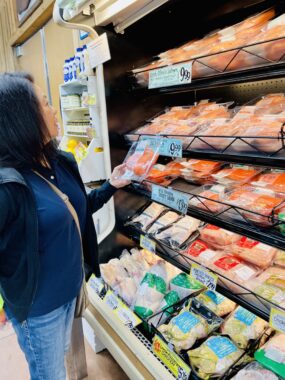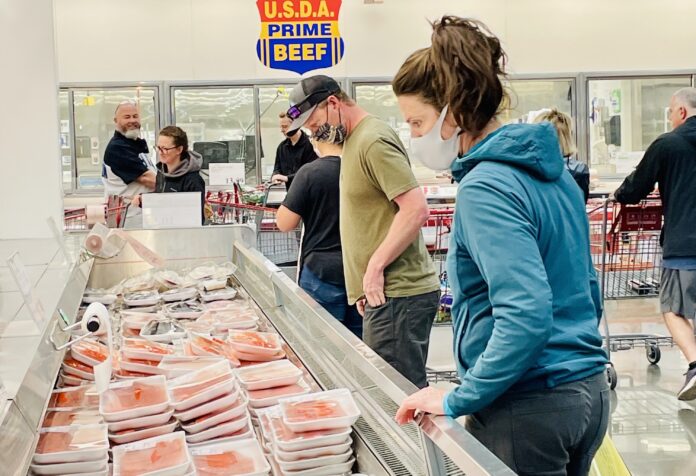Latest retail data show American consumers bought 1.2-percent fewer fresh salmon in the four weeks ending June 12 compared to the previous four weeks as price/lb went from $10.97 to $11.26 at local retail outlets.
Multi-sales channels in the United States sold 17.9 million lbs of fresh salmon in the four weeks ending June 12, down from 18.6 million lbs in the prior four-week reporting period ending May 15, according to data from Chicago-based market research firm IRI.
Dollar sales reached $201.8 million in the four weeks ending June 12, down nearly 1.5 percent from the previous four weeks.
Compared to the same four-week period a year ago, fresh salmon sales were down 10.6 percent by volume but up 7.8 percent in dollar sales, underscoring the stronger salmon prices this year.

IRI data includes multi-sales channels, including food/grocery, drug, mass merchandisers, Walmart, club stores (such as Sam’s), dollar stores and military commissaries.
Overall fresh seafood sales
Sales declines were also seen in the overall fresh seafood category: volume sales in the four weeks ending June 12 were down almost 2 percent compared to the previous four weeks to reach $489.8 million. Compared to the previous year, dollar sales were down 13 percent while volume sales were down 23 percent.
Frozen seafood sales
In the frozen seafood category, sales reached $501 million in the four weeks ending June 12. This is down 1 percent from the previous four weeks but compared to the previous year’s dollar sales, the figure is down 7.6 percent.
Changing buying patterns
“Retail is an incredibly competitive industry. Smart consumers are already changing their purchasing patterns to account for higher prices, particularly when it comes to everyday necessities for themselves and their households, said the voice of the retail industry in the US,” the National Retail Federation said about American consumers’ changing buying patterns.
Citing latest available inflation data (May), NRF says US consumer prices increased 8.6 percent while wholesale inflation rose 10.8 percent from 12 months ago.










